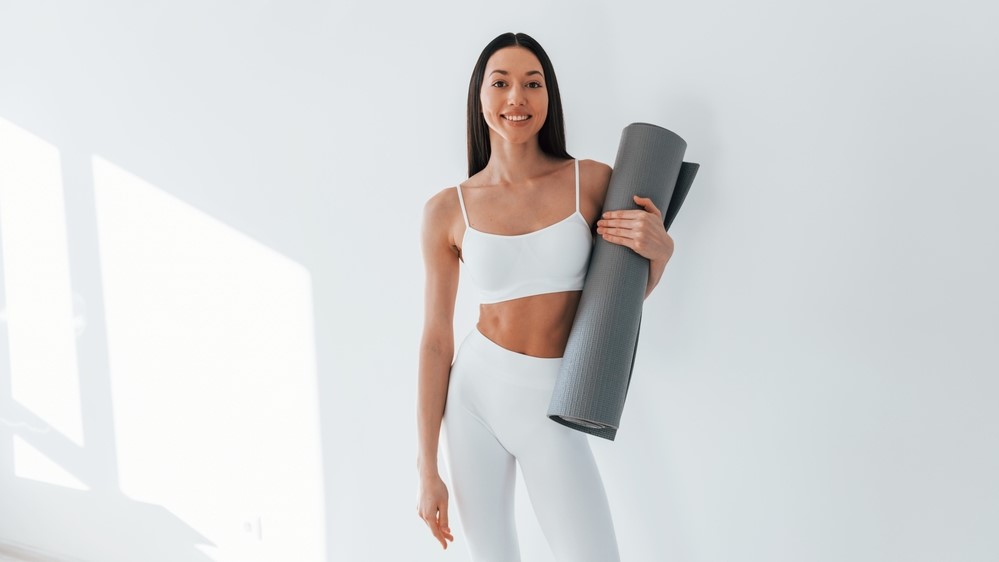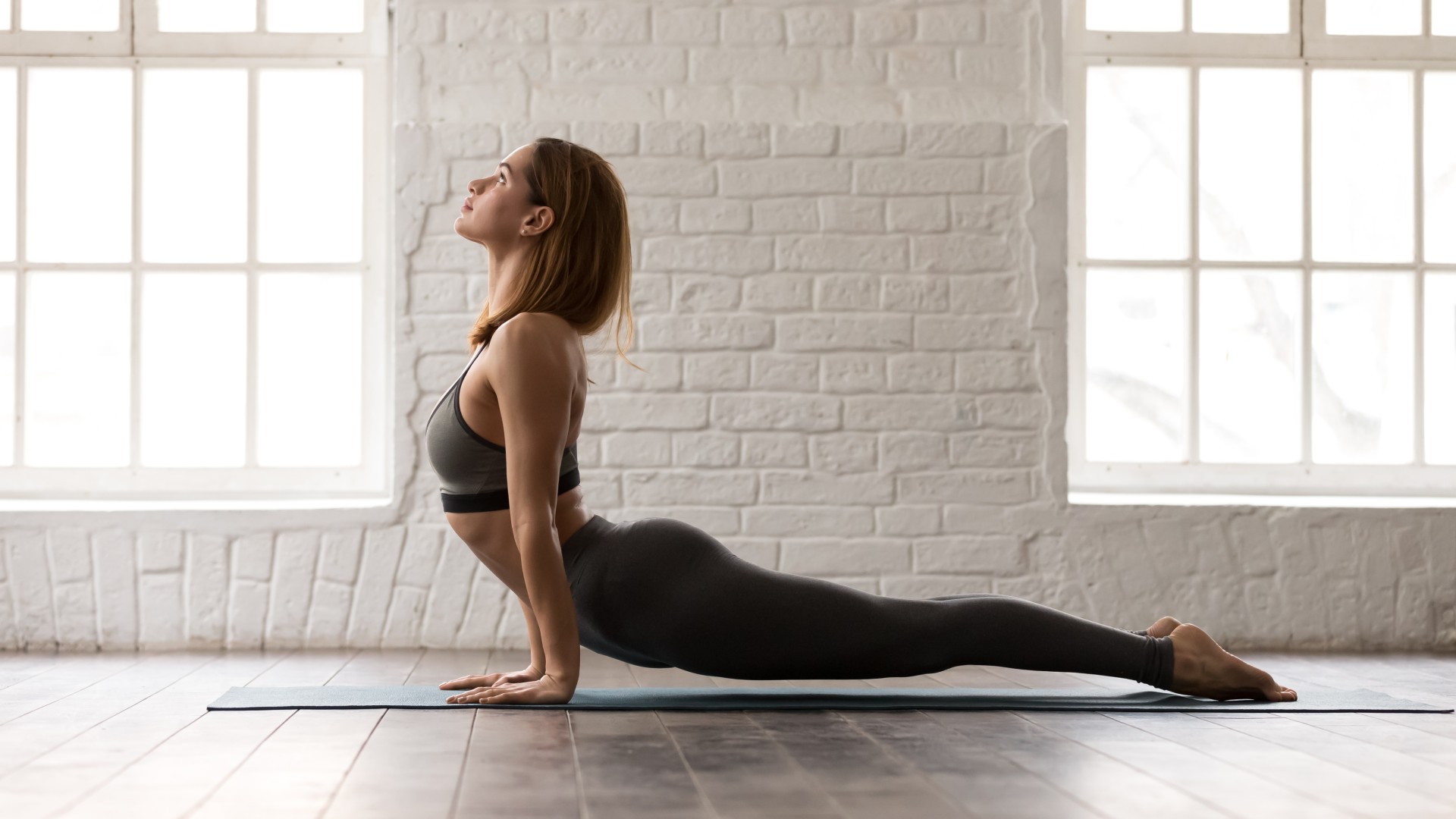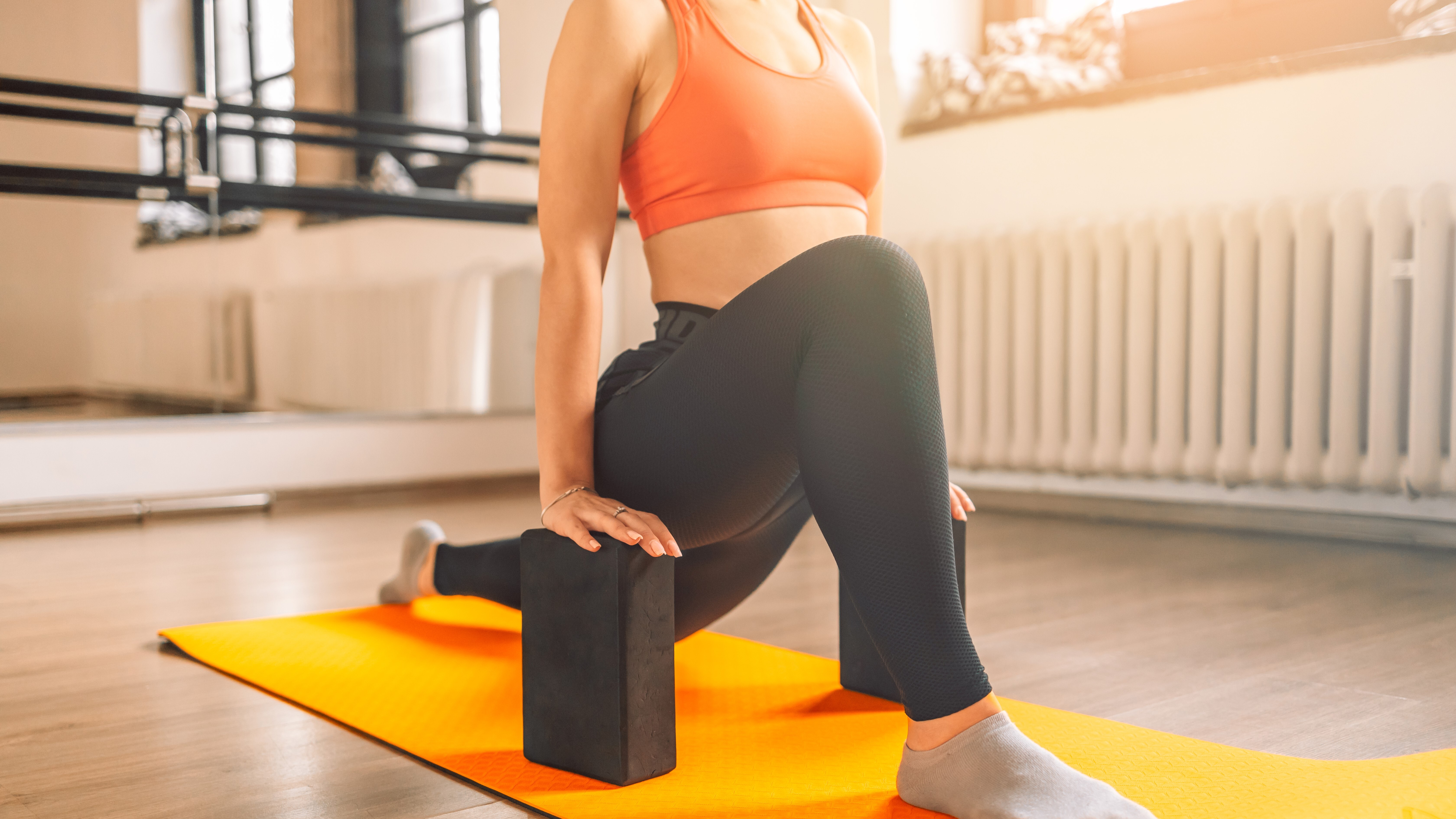
Stepping into a yoga studio for the first time might look like a haven of Lululemon, atmosphere sprays and the best yoga mats one could buy, but for many yoga beginners, it can also feel intimidating.
Having been there myself, I decided to discuss the three things I wish I had known as a yoga beginner. I stepped into my first class with all the gear and no idea what to expect. If that feels familiar, I cover the many benefits of yoga worth exploring, why it’s worth persevering and a few lessons I wish I’d learned first but have learned since.
If your downward-facing dog just looks down, and you can’t stand on your head yet, fear not. Luckily, yoga isn’t about that at all.
3 things I wish I had known as a yoga beginner
1. Learn how to breathe

I’ve been doing yoga for years, and I only began to understand the right way to breathe when I found my current teacher and started her hot yoga classes for 6 months. If the “simple” art of breathing doesn’t come naturally to you (it doesn’t for me, I’m useless), don’t fret. It might take a combination of time and patience, the correct class and yoga style and a teacher who best suits you.
Yoga combines asana (poses) and pranayama (breath) to connect the mind, body and breath. During classes, you’ll learn diaphragmatic breathing or “belly breathing” and how to generate a more expansive breath, as well as activating the ujjayi pranayama, which can help lower blood pressure and slow the heart rate.
In yoga circles, ujjayi is considered a cleansing breath that can build heat in the body. You’ll seal your lips and breathe in and out through your nose, which creates a slight restriction in the back of your throat. It’s also referred to as the “ocean breath” because it creates the sound of waves.
Reading a guide to ujjayi can be helpful if you plan to try it, but otherwise, focus on learning some basic breathing principles first to help you understand the effect of breathwork on your body.
For example, it has been shown to switch the body from the sympathetic nervous system to the parasympathetic — our state of calm and relaxation. The research has shown that just minutes of breathing exercises can reduce anxiety and stress levels.
In terms of your physical practice, correct breathing can help balance, improve posture and develop depth during poses, helping you to stay present in class and plug into what your body is doing. Fancy giving it a try? Here’s Chris Hemsworth’s 5-minute breathing exercise (that man really can do everything), and if you own a Garmin, try these 3 breathing exercises using your watch.
2. Find the right class and teacher

Yoga encompasses many styles of yoga practice, and the best yoga classes are the ones you enjoy. First, find a beginner class that can teach you the basics of yoga and the core postures you can expect to find. It’s the perfect way to develop your practice and learn the essentials properly.
From there, find the right level and type of yoga class for you. There are all sorts to consider — Forrest, Ashtanga, vinyasa and Rocket are typically faster-paced and more physically demanding, whereas yin yoga is restorative and involves holding poses for minutes at a time. Hatha is slower-paced, with a strong breathing focus, controlled postures and transitions and less tempo.
If you plan to advance your practice with inversions and balances, you can find them in faster-paced dynamic classes. Then there’s hot yoga if you like dialing up the heat and, of course, Bikram.
Yoga has distanced itself from the controversial method over the years, but the practice has since rebranded as Method or Original 26+2; the style focuses on the same 26 postures every class, performed in 90-degree (F) heat. Some love the repetition, and others (like me) can’t stand it.
I recommend reading the class description, exploring your options and finding an instructor that works for you. Your yoga teacher will set the tone for the 45, 60, or 90 minutes spent on your mat, so you’ll want to find someone who will inspire your practice and help guide you safely.
3. Find the right mat and props

Blocks are your friends. They don’t signal defeat, so when a yoga teacher tells you to use them, they mean it. You can achieve better posture and deeper poses and develop a more satisfying practice if you scrape away your ego and use the darn things.
These yoga accessories can help bridge the gap between your limbs and mat and improve muscle activation and alignment. That also applies to straps, which are great warm-up tools for tight shoulders and hamstrings, and grip towels, which are staples for hot yoga lovers.
If you’re a yoga beginner without a mat, an Amazon Basics yoga mat or similar will save you money in the short term. I don’t recommend spending good money on one until you’ve attended a series of classes and know what you like and dislike.
Yoga combines asana (poses) and pranayama (breath) to connect the mind, body and breath.
Finding the best yoga mat for you doesn’t have to be a minefield. Our guide (above) helps you decide if you want a thicker mat for yin, a thinner design for inversions and balance practice, or grippy materials for hot yoga or if you sweat a lot.
There’s nothing worse than sliding around your mat for an hour and clinging to downward dog by your fingernails. Our guide also provides sustainable options that are good for the planet and teaches how to clean your yoga mat without damaging it.
Benefits of yoga
Learning what an hour of yoga can do to your body might surprise you. From helping to build muscle to reducing stress and anxiety, there are plenty of reasons to roll out your mat and get moving.
Yoga could build stronger joints, bones and muscles, help develop better range of motion and flexibility and aid relaxation. Depending on the type of practice you develop, you could also improve your cardiovascular fitness.
In particular, hot yoga could help relax soft tissue, allowing yogis to find a deeper stretch and increase mobility in class more so than in non-heated classes. One Physical Therapy in Sport study found that heat could enhance stretching efficacy.
A lesser-known benefit of yoga is the impact on your sleep hygiene. According to NHIS, 55% of yoga participants reported better sleep, and the Sleep Foundation even supports regular yoga for improving sleep quality.
Bottom line
If you’re a yoga beginner looking to begin a practice from home or in a local studio, remember to take your time and find the best yoga routine for you. Developing a sustainable yoga practice should be at the forefront, allowing you to enjoy the many benefits the practice has to offer for years to come.
If you want to start a routine from home, we’ve got you covered with some recommendations below.
More from Tom's Guide
- Bedtime yoga routines worth trying
- I added this yoga routine every day for 2 weeks, here are my results
- Forget weights, 5 ab exercises you can do with a yoga block
- I've walked more than 10,000 steps with the Apple Watch 9 and Fitbit Charge 6, here's which came out on top







